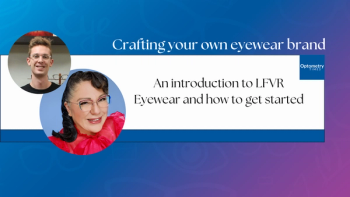
ASCRS 2023: Negative effects of several contraceptive modalities on dry eye
Lucie Moore, BSc, in a presentation at the American Society of Cataract and Refractive Surgery annual meeting in San Diego, said the study focused on identifying factors that could put patients at a higher risk for developing dry eye disease.
Women who use contraceptives may have a higher risk of developing symptoms of
The authors evaluated the effects of 18 different modalities of contraceptives on causing dry eye symptoms in women. Their goal was to identify factors that may put patients at higher risk of developing dry eye when on different modes on contraception, they explained.
To do this, Moore and colleagues retrospectively evaluated the university’s electronic medical charts for women aged 18 to 50 years who had been diagnosed with dry eye syndrome and keratoconjunctivitis sicca, not specified as Sjögren's after starting birth control.
The patients’ reported dry eye symptoms and findings from their initial ophthalmologic visits were recorded in addition to the mode of contraception, age, specific formulation and dosage of contraception, initial visual acuity, and confounding medications. The authors reported analyzing 18 different bimodalities of birth control used by 285 women.
The analysis showed that the patients who took estrogen-containing birth control had significantly more blepharitis than those on non-estrogen birth control (p=0.034). Women who used more than 1 contraceptive method were more likely to have more dry eye symptoms and more findings at examination (p=0.0164).
Norgestrel-ethinyl estradiol specifically caused the most significant dry eye findings than 7 other types of birth control of (p<0.05). Levonorgestrel had significantly more symptoms than 4 other contraceptives (p<0.05).
Copper intrauterine devices were associated with significantly fewer findings on examination compared with than 6 other contraceptives and fewer symptoms than 2 others (p<0.05).
Based on their findings, investigators reached the conclusions that women who had taken more than 2 forms of birth control ever had a higher chance of developing dry eye. Those on non-hormonal birth control had fewer symptoms than those using hormonal birth control products. Some formulations of birth control that may cause worse dry eye than others and should be avoided in those with pre-existing dry eye.
Newsletter
Want more insights like this? Subscribe to Optometry Times and get clinical pearls and practice tips delivered straight to your inbox.


















































.png)


